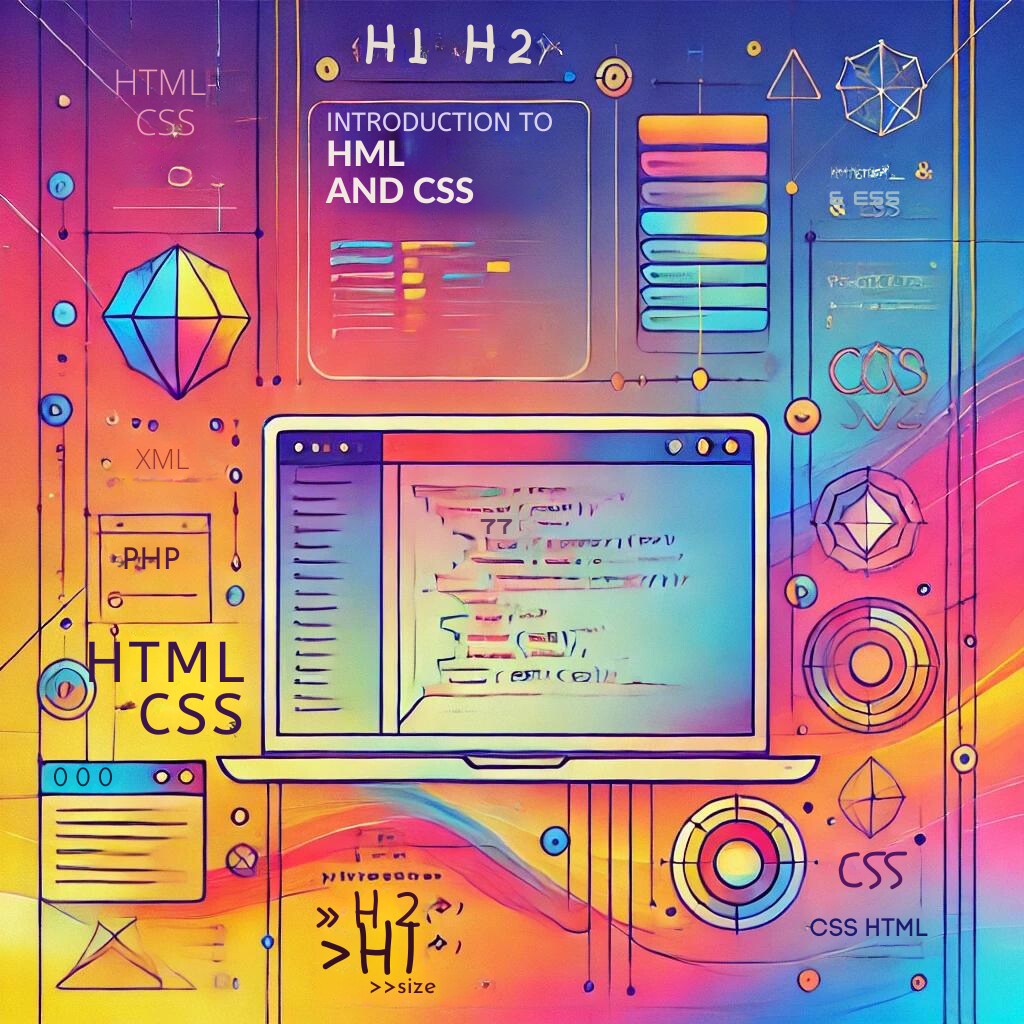Overview:
This course, Introduction to HTML and CSS, is designed to provide you with a solid foundation in web development, focusing on the essential building blocks of websites. Throughout this course, you’ll learn how to structure web pages using HTML (HyperText Markup Language) and style them using CSS (Cascading Style Sheets). Whether you’re aiming to create your website or start a career in web development, this course will give you the fundamental skills needed to build and design basic web pages.
What You Will Learn:
- HTML Basics:
- Understanding HTML tags and attributes.
- Structuring web content using headings, paragraphs, lists, links, and images.
- Creating forms for user input and organizing content with semantic HTML elements like
<header>,<footer>, and<main>.
- CSS Basics:
- Applying styles to HTML elements using CSS selectors.
- Modifying text styles (fonts, colors, spacing) and adding background colors or images.
- Creating layouts with the Box Model and controlling the positioning of elements.
- Introduction to responsive web design techniques.
- Combining HTML and CSS:
- Linking external CSS files to your HTML documents.
- Understanding the relationship between HTML structure and CSS presentation.
- Styling navigation bars, buttons, and basic page layouts.
Learning Objectives:
- Build a solid understanding of how websites are structured using HTML.
- Learn how to style and design web pages with CSS.
- Create responsive and visually appealing web pages that adapt to different screen sizes.
- Gain the skills to continue into more advanced web development topics like JavaScript or CSS frameworks.
Who This Course Is For:
- Complete Beginners: No prior knowledge of web development is required.
- Aspiring Web Developers: This course is a great first step if you’re looking to start a career in front-end development.
- Entrepreneurs & Hobbyists: Perfect for anyone who wants to create a personal or business website from scratch.
Course Features:
- Interactive lessons and hands-on practice exercises.
- Real-world examples and metaphors to simplify complex concepts.
- Quizzes and challenges to reinforce learning and test understanding.
- Access to extra resources, including related readings, frameworks, and advanced topics.
By the end of this course, you will have the ability to create a fully functional and styled webpage, understand the foundational concepts of web development, and be ready to explore more advanced topics like JavaScript, CSS Flexbox, and responsive design.
